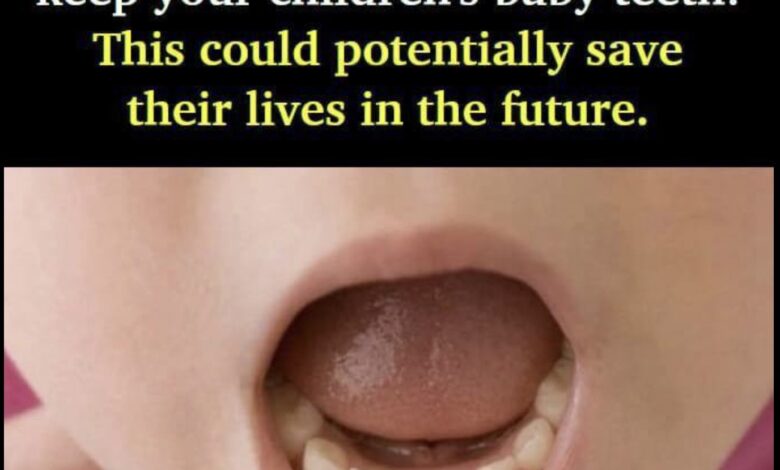Baby Teeth Stem Cell Banking: A Revolutionary Medical Insurance for Your Child’s Future Health

Why Medical Professionals Recommend Preserving Your Child’s Baby Teeth
Healthcare professionals across the globe are advising parents to consider baby teeth preservation as a form of medical insurance that could potentially save lives. This innovative approach to preventive healthcare involves banking stem cells found in children’s naturally shed teeth for future medical treatments.
Real-Life Success Story: How Stem Cell Therapy Saved a Young Life
The transformative power of stem cell therapy became evident in the remarkable recovery of Jenson Wright. At age seven, Jenson faced his second cancer diagnosis—leukemia affecting 65% of his body. His previous battle at age four involved both lymphoma and leukemia, making this subsequent diagnosis particularly challenging.
When traditional chemotherapy treatments proved ineffective, Jenson’s medical team turned to regenerative medicine. His mother, Carolyn, documented their journey, describing how the aggressive cancer was spreading “like wildfire” through his small body, creating what she feared would become “every parent’s nightmare.”
The breakthrough came through umbilical cord blood stem cell therapy. A generous mother from Texas had preserved her newborn’s umbilical cord blood, which became the lifesaving treatment for Jenson. This stem cell transplant demonstrated the incredible potential of regenerative medicine in treating life-threatening conditions.
The results were extraordinary. Within just five days of the stem cell transplant, healthy cells began eliminating the cancer. By 2019, medical professionals declared Jenson completely cured, with no further treatment required. Today, he thrives as a healthy 16-year-old student.
Understanding Stem Cell Banking: Your Child’s Biological Health Insurance
What Are Stem Cells and Why Are They Valuable?
The Mayo Clinic defines stem cells as specialized cells capable of self-renewal and differentiation. These remarkable cells can transform into various cell types including brain cells, heart muscle cells, bone cells, and other essential cellular components throughout the body.
Baby Teeth: An Unexpected Source of Medical Hope
Recent research published in the National Library of Medicine identifies stem cells from human exfoliated deciduous teeth (SHEDs) as optimal candidates for personal cell banking. These dental stem cells offer several advantages:
- Non-invasive collection: Obtained naturally when baby teeth fall out
- No rejection risk: Autologous cells eliminate compatibility concerns
- High viability: Mesenchymal stem cells (MSCs) in dental pulp remain potent
- Regenerative potential: Capability to repair damaged tissues and organs
The Stem Cell Banking Process
Instead of discarding lost baby teeth, parents can preserve them through specialized stem cell banking services. The tooth is stored under controlled laboratory conditions, maintaining cellular viability for potential future medical applications.
Investment Considerations: Weighing Costs Against Future Benefits
Current Market Analysis
Private stem cell banking involves initial collection fees plus ongoing storage costs that accumulate over time. While the technology shows promise, parents must consider several factors:
Potential Benefits:
- Personalized regenerative medicine options
- Insurance against future health challenges
- Non-invasive collection process
- Advancing medical research applications
Current Limitations:
- Experimental nature of many treatments
- Limited immediate therapeutic applications
- Ongoing storage expenses
- Uncertain return on investment
Alternative Healthcare Investments
Public stem cell banks, particularly umbilical cord blood banks, offer more established treatment options currently used in medical practice. These proven therapies may provide more immediate value compared to experimental dental stem cell applications.
Future of Regenerative Medicine and Personalized Healthcare
The field of regenerative medicine continues evolving rapidly, with dental pulp stem cells representing one promising avenue. As research progresses, these preserved cells may become valuable assets in treating various medical conditions including:
- Neurological disorders
- Cardiovascular disease
- Orthopedic injuries
- Autoimmune conditions
- Organ regeneration
Making Informed Healthcare Decisions for Your Family
When considering baby teeth stem cell banking, families should:
- Consult healthcare professionals about personalized risk factors
- Research reputable banking facilities with proper certifications
- Compare costs against other health insurance investments
- Stay informed about advancing treatment options
- Consider family medical history when evaluating potential benefits
Conclusion: Investing in Tomorrow’s Medical Possibilities
While baby teeth stem cell banking remains largely experimental, the success stories like Jenson Wright’s demonstrate the life-changing potential of stem cell therapy. Parents must weigh the current costs against future possibilities, considering their family’s unique circumstances and risk tolerance.
This emerging field represents the intersection of preventive healthcare, medical insurance, and cutting-edge regenerative medicine. As treatment applications expand, those early decisions to preserve baby teeth may prove invaluable for future family health outcomes.
This article is for informational purposes only and should not replace professional medical advice. Consult with qualified healthcare providers before making medical decisions for your family.